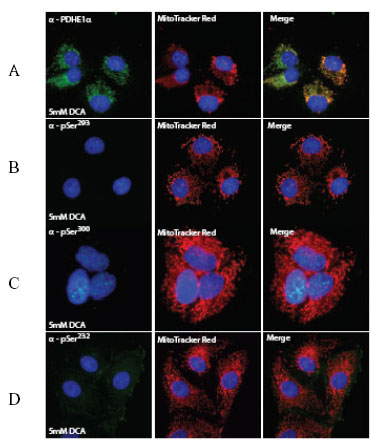AP1063 Sigma-AldrichPhosphoDetect™ Anti-PDH-E1α (pSer²³²) Rabbit pAb
This PhosphoDetect™ Anti-PDH-E1α (pSer²³²) Rabbit pAb is validated for use in Immunoblotting, IF, IP for the detection of PDH-E1α (pSer²³²).
More>> This PhosphoDetect™ Anti-PDH-E1α (pSer²³²) Rabbit pAb is validated for use in Immunoblotting, IF, IP for the detection of PDH-E1α (pSer²³²). Less<<Synonymes: Anti-Pyruvate Dehydogenase pSer²³² Rabbit pAb
Produits recommandés
Aperçu
| Replacement Information |
|---|
Tableau de caractéristiques principal
| Species Reactivity | Host | Antibody Type |
|---|---|---|
| H, M, R | Rb | Polyclonal Antibody |
Prix & Disponibilité
| Référence | Disponibilité | Conditionnement | Qté | Prix | Quantité | |
|---|---|---|---|---|---|---|
| AP1063-50UG |
|
Ampoule plast. | 50 μg |
|
— |
| Product Information | |
|---|---|
| Form | Liquid |
| Formulation | In PBS. |
| Positive control | HEK293 cells |
| Preservative | ≤0.1% sodium azide |
| Quality Level | MQ200 |
| Physicochemical Information |
|---|
| Dimensions |
|---|
| Materials Information |
|---|
| Toxicological Information |
|---|
| Safety Information according to GHS |
|---|
| Safety Information |
|---|
| Product Usage Statements |
|---|
| Packaging Information |
|---|
| Transport Information |
|---|
| Supplemental Information |
|---|
| Specifications |
|---|
| Global Trade Item Number | |
|---|---|
| Référence | GTIN |
| AP1063-50UG | 04055977227789 |
Documentation
PhosphoDetect™ Anti-PDH-E1α (pSer²³²) Rabbit pAb FDS
| Titre |
|---|
PhosphoDetect™ Anti-PDH-E1α (pSer²³²) Rabbit pAb Certificats d'analyse
| Titre | Numéro de lot |
|---|---|
| AP1063 |
Références bibliographiques
| Aperçu de la référence bibliographique |
|---|
| Rardin M.J., et. al. 2009. Anal. Biochem. 2, 157. Seifert, F., et al. 2007. Biochemistry 21, 6277. Lee, J., et al. 2007. Mol. Cell Prot. 4, 669. Patel, M.S. and Korotchkina, L.G. 2006 Biochem. Soc. Trans. 34, 217. Korotchkina, L.G., et al. 2001. J. Biol. Chem. 40, 37223. |









